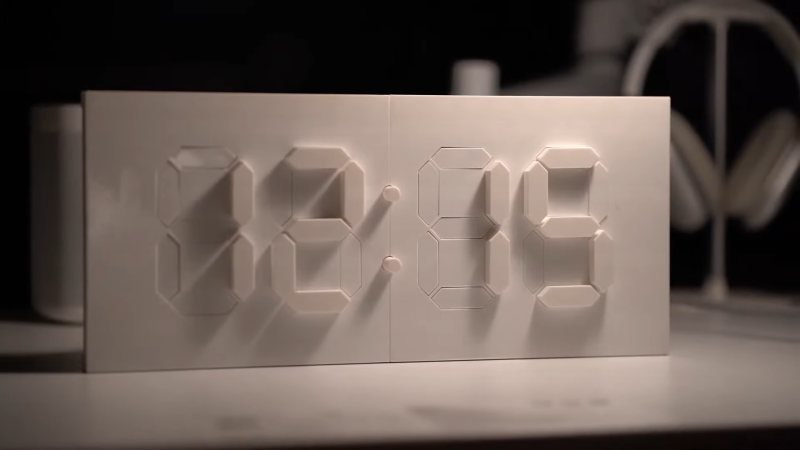Hackers and makers aren’t usually too interested in basic round analog clocks. They tend to prefer building altogether more arcane and complicated contraptions to display numbers for the telling of time. [alstroemeria] did just that with this nifty kinetic clock build.
The basic concept of the kinetic clock is to have a flat plate, which individual segments raise out of to create a physical (instead of illuminated) 7-segment display. This is achieved with servos which push the segments in and out using a small rack mechanism. It’s not a sophisticated build; it simply uses 30 servos to handle all the segments needed to tell time. Thus, the Arduino Mega was the perfect tool for the job. With a sensor shield added on, it has an abundance of IO, driving a ton of servos is a cinch. There’s also a DS3231 real time clock to help it keep accurate time.
Incidentally, it’s a hefty thing to print, according to YouTuber [Lukas Deem] who replicated the project. It took around 85 hours to print, and a total of 655 grams of filament – not counting mistakes and trashed parts.
And if you think you’re having deja-vu, you might well be. We’ve seen a take on this exquisite design before. We liked it then, and we like it now.
Overall, it’s a stylish build that looks as good as your 3D printer’s output will allow. A resin printer would be a massive boon in this regard. Video after the break.

















Very interesting! Would be cool to make this out of metal using EDM to carve the sliding parts…
You know that is a trick, right? The two parts are carved out of two different bits of metal, possibly even honed to fit tightly, and then the face is machined in a single operation to make the two parts appear seamless. Steve Mould has a video about it
Yeah, I know. It’s still supremely cool to see. If it could be machined to the point where the flush digits all but disappeared, that would be magical.
Tooooo expensive.
Hello anyone,
this type of indication as been presented with the Harry Winston Opus 8:
https://technabob.com/harry-winston-opus8-watch-melds-analog-and-digital/
For a wrist watch surely an extreme complication -as usual for Opus- . I would really like to see this display done in a less “brute force” way done (using cam shafts instead of individual servos, etc.).
At the same time my nod goes to [Levin Day] for taking this step and making it all work. It is a beautiful setup that reserves all the respect!
-Make it Happen-
Many greetings and kind regards
GvTT
I wonder how complex it would be to replace the servos with cams. Would cut down on the cost and the noise.
Welcome to the world of value engineering.
Most of these mechanical segment clocks (a variation is the pin clock) use solenoids to move the segments. A h-bridge is used to push/pull each segment. Not really hobbyist friendly unless you like winding coils.
7-segment cam-driven displays pop up every so often, lots of moving parts though the electronics is much simpler, just a motor per digit.
And of course you (mostly) ditch the 3D printing and laser cut everything instead.
I wonder if you could adapt a flip-dot mechanism where it takes a burst of energy to change state, but is stable at rest in both end states. Quicker change, less noise during the transition, but potentially too much friction to overcome during transit.
this is similar with a more simple mechanism
https://www.instructables.com/Mechanical-7-Segment-Display-V2/
Nice, thanks for mentioning this! Very neatly done
To the Indoor climbing wall manufacturer out there, yes i mean you guys*! Build this as a climbing wall. And i want his with a app so i can type in how heavy i want climb.